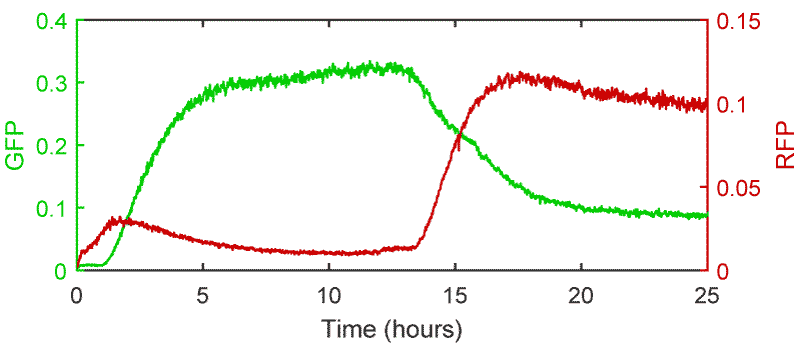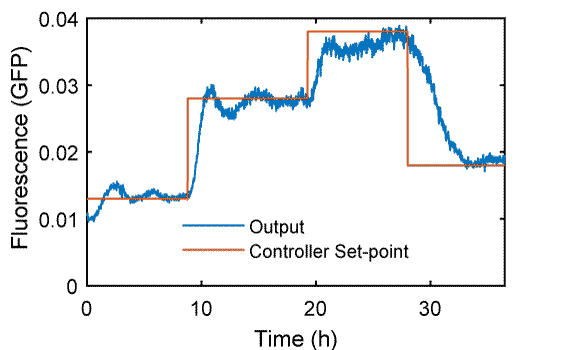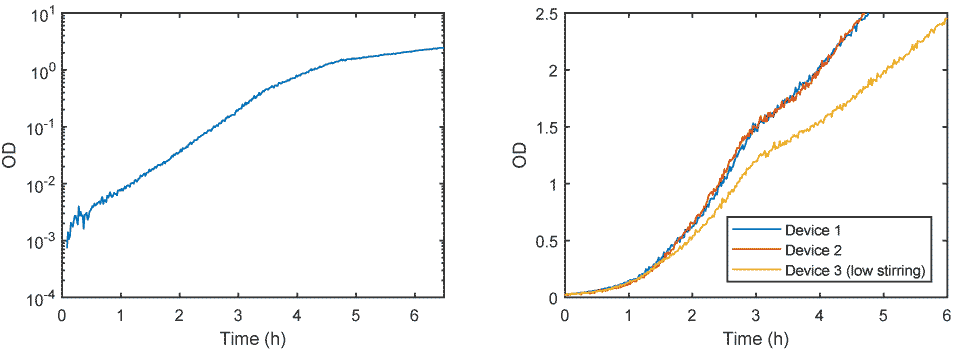Applications
Chi.Bio’s broad range of measurement and actuation capabilities make it ideal for many common experiments in biological science research. Since all measurements are taken within the device you’ll get minute-by-minute feedback on how your cells are behaving, and best-in-field data quality. Some examples of experiments performed using Chi.Bio are described below.
Optical Density Regulation
One of Chi.Bio’s key functions is its ability to keep a cell culture in exponential growth for an extended period by regulating its optical density. This requires two of the platform’s peristaltic pumps; one to add fresh media, and another to remove old media and cells.

Fluorescent Protein Measurement
Fluorescent proteins provide convenient and measurable outputs for many biological experiments. Chi.Bio is designed to excite a broad range of fluorescent proteins, and measure their concentration using its inbuilt spectrometer. In this experiment we chemically induce two different fluorescent proteins; a small inducer pulse is added at the start to induce RFP, then GFP is induced, and then RFP is induced again. Using the right excitation/emssion wavelengths means there is no cross-talk between the two measurement bands, and we can observe the competition for cellular resources between the two fluorescent proteins.

Optogenetics
In addition to exciting fluorescent proteins, the LEDs inside Chi.Bio can be used to control light-sensitive biological systems. In this experiment we used the CcaS-CcaR optogenetic transcription regulatory system (red means stop, green means go) coupled to the expression of a GFP reporter. This simple circuit’s output can be made to vary over short time-scales, and over a large dynamic range of output levels.

Online Feedback Control
Since all experimental capabilities are centralised in a single platform, Chi.Bio can easily be programmed to do online in silico control of a growing cell population. In this experiment we maintained a cell culture at constant optical density, and implemented a PID controller which regulates the optogenetic actuation level in order to regulate the cells’ output fluorescence to follow a user-defined profile.

Growth Rate Measurement
Instead of maintaining a constant OD, Chi.Bio can be programmed to grow a culture in a “zig zag” density pattern, allowing precise measurement of temporal variations in growth rate. In this experiment we subjected cells to a constant, low intensity of UV light, and measured how the culture’s growth gradually slows over a period of many hours.

Growth Curves
Chi.Bio can also be used for basic experimental procedures such as measurement of growth curves and incubation. In this experiment we grew three biologically identical samples, for one of which we reduced the stirring speed, resulting in reduced growth.
